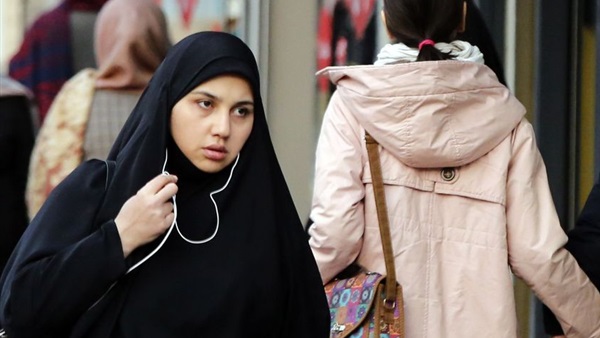Iran Plans Penalties for Women Breaking the Hijab Rule

Following months of protests, authorities are shifting
tactics on how they enforce a law requiring women to cover their head in public
in an attempt to weaken the support for the antigovernment movement.
The Iranian prosecutor general’s office has issued new
guidance to the police to refrain from arresting women who break the country’s
female dress code, but instead impose penalties on them, Iran’s deputy attorney
general was quoted as saying by the semiofficial ISNA news agency.
Authorities have said they would also increasingly rely on
new surveillance technologies to enforce the dress code. The new economic
penalties have been extended to even those tolerating dress-code violations.
For instance, taxis, restaurants and banks face fines if they allow women
without hijabs to enter.
Protests erupted in Iran after the death of Mahsa Amini on
Sept. 16, a 22-year-old woman who was in police custody for allegedly
disrespecting the strict dress code, which includes wearing a headscarf, or
hijab. Tens of thousands have since taken to the streets protesting against the
morality police, a vice squad that has often detained women for violating the
dress code. The police have also been accused of physically abusing the
women—including slapping and beating them with batons.
Besides a fine, the penalties recommended by the prosecutor
general’s office range from women being ordered to perform community service to
an international travel ban. Those working for the government could be
dismissed from their jobs. Women breaking the dress code could have their
vehicles impounded.
“The police have been
ordered to deal decisively with the crime of not wearing the hijab,” Abdul
Samad Khorramabadi, the country’s deputy attorney general, said in a directive
on Jan. 10, according to ISNA.
Still, by taking a less physically confrontational approach
on enforcing the dress code, authorities appeared to be trying to reduce some
of the widespread anger. Ms. Amini’s death touched a nerve among many Iranian
families whose female members have been targeted by officers enforcing the
country’s strict codes for clothing and behavior.
The new directive was announced as Supreme Leader Ali
Khamenei appeared to take a conciliatory tone toward women not fully covered.
“A weak hijab is not appropriate but it is not a reason to consider that person
to be out of the religion and revolution’s circle,” he said in a speech on Jan.
10.
Mr. Khamenei has strongly defended the mandatory hijab rule
in recent years and regularly blames Iran’s foreign enemies, including the
U.S., for fomenting the unrest.
Iran requires modest dress for both men and women, though
women face more restrictions. The unrest currently engulfing the country is
rooted in 40 years of tension over the compulsory hijab, which is seen by both
authorities and citizens as a proxy for authoritarian control, particularly
over the more secular factions of society.
Some women have burned their hijabs and shunned wearing them
in public since the protests started. Many young protesters say they are
seeking not only elimination of the hijab but to bring down Iran’s theocratic
government.
Advocates of the rules have called them Iran’s last stand on
strict Islamic morality, with polls showing that a growing majority of the
country is secular and opposed to the mandatory hijab.
The directive on the economic penalties comes a month after
Iran’s Attorney General Mohammad-Jafar Montazeri said the country had disbanded
the morality police and was considering altering the requirement that women
covered their heads in public.
There has been no official announcement that the morality
police force has been disbanded, other than Mr. Montazeri’s comments. Activists
say the Islamic Republic is also unlikely to ever do away with the compulsory
hijab—a cornerstone of the government’s rule.
The strict dress code is a “way to maintain the regime’s
control over society,” said Azam Jangravi, an activist who was given a
three-year jail sentence in Iran in 2018 for refusing to wear the headscarf but
only served 10 days of the prison term. She is based in Canada now.
In January, Iran’s police resumed sending warning text
messages to female drivers found not wearing a hijab in their cars, according
to Fars, another conservative news outlet.
“Cameras used to record traffic violations…using facial
recognition, can systematically implement this work,” of monitoring women
breaching the dress code, said Musa Ghazanfarabadi, the head of the Legal and
Judicial Commission in Iran’s Parliament, in October, according to ISNA. “That
would help reduce the presence of law enforcement forces on the streets and
avoid “another clash between the police and citizens,” he said.
The demonstrations, which began with calls for change and
transformed into rallies calling for an end to the country’s Islamic system of
rule, have shrunk in recent weeks. The government has executed at least four
people and arrested more than 1,000 people in connection with the protests.
Hundreds have been killed in clashes with the security forces.









